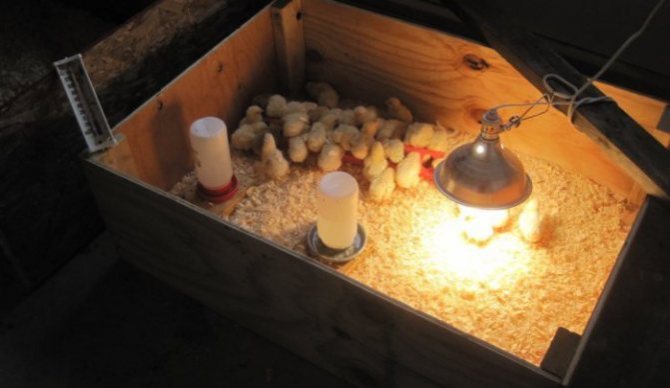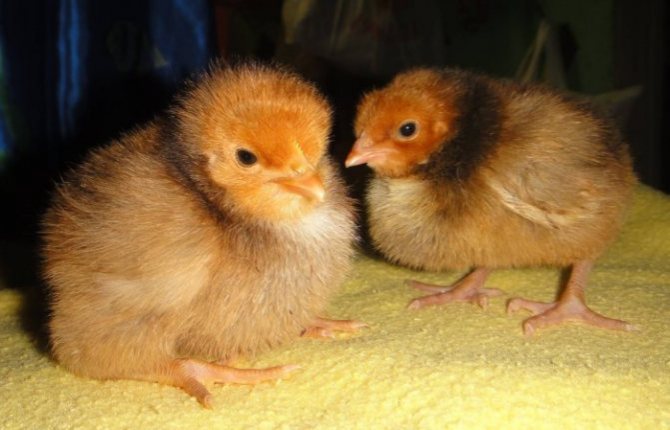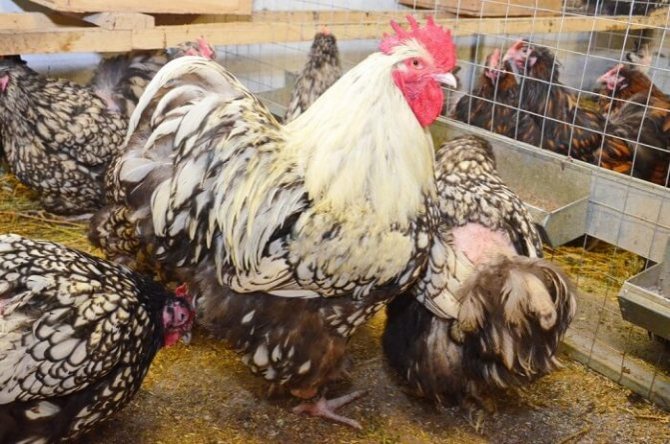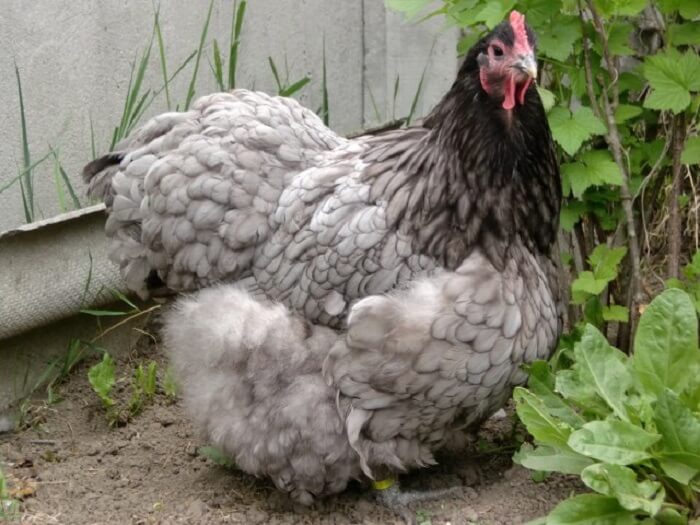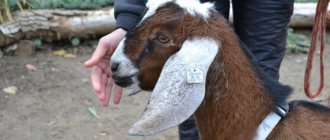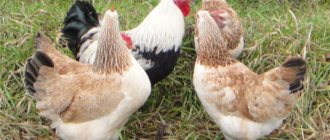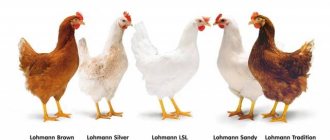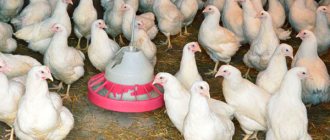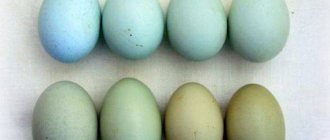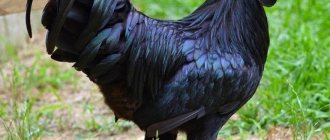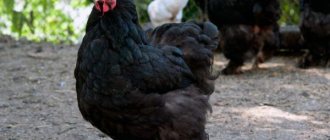The Orpington breed of chickens was bred in England, in the county of Kent by William Cook. It gets its name from the city of Orpington. William Cook decided to develop a breed of chickens that was supposed to become universal, and, most importantly, the presentation of the carcass should appeal to English buyers. And in those days, chickens with white skin, and not with yellow skin, were very much appreciated.
These are the breeding tasks that this man set for himself. And we must give him his due, these goals were achieved. A bird was bred that quickly gained weight, had a high egg production, was undemanding to the conditions of detention, and could find its own food while walking.
Breeding history of the breed line
Orpington are chickens of English origin. They were bred by William Cook, who lived in the city of the same name in Kent County. He began breeding work in 1876. At that time, chicken carcasses with white skin were highly prized. Cook wanted to create just such a bird and began to experiment. He crossed Plymouthrocks, Langshans and Minorocs.
The scientist was never able to complete his work; his work was continued by Joseph Partington. He added the blood of the Cochinchins to the new breed, from which the Orpingtons inherited magnificent plumage. At first, the new English line could boast only black color, later others were bred. Fawn Orpington appeared in 1894, and in the 1920s, German breeders introduced the Red Orpington. The white variety was created with the participation of Leghorns. It was created in 1989.
Frequent illnesses
Lush plumage becomes an object for attacks by parasites - be vigilant. The second most common disease in females is vitamin deficiency.
Males, on the other hand, suffer from anemia and oxygen starvation during the winter, so it is important that the house has the possibility of air exchange. The herd can be saved from all other sores with good housing conditions, hygiene, and preventive measures.
What are the reviews?

Description of the breed with photos and characteristics
Representatives of the Orpington breed line are distinguished by a massive cuboid body. Lush plumage visually increases the volume of the body even more. Studying the exterior of English chickens, many mistakenly attribute them to meat breeds, not meat and egg. Birds have very well developed chest, abdomen and limbs.


Orpington rooster
Orpington's salient features:
- the weight of the rooster reaches 5 kg, laying hens - 4 kg;
- small head;
- crest red, foliate, straight;
- the color of the iris of the eyes depends on the color of the bird;
- lobes of medium size, oval earrings;
- the neck is of medium length, powerful, slightly curved, abundantly covered with feathers;
- the back is long, wide;
- massive chest set low;
- small wings are tightly attached to the body;
- the belly is voluminous;
- short tail;
- legs of medium size, strong, set wide apart, bared metatarsus.
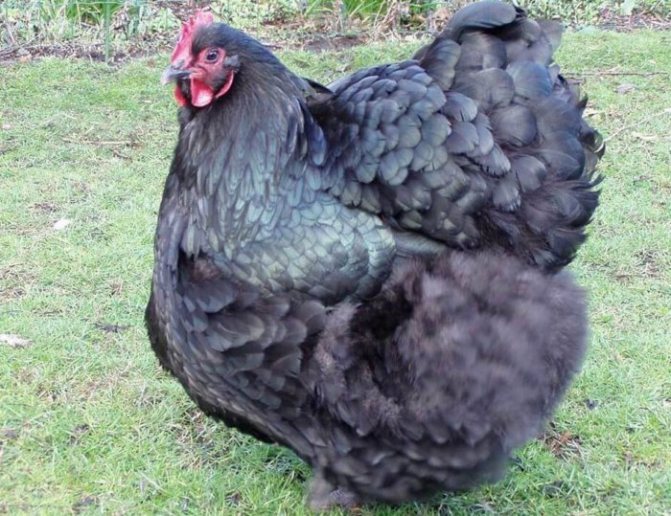

Orpington laying hen
It is not difficult to distinguish a chicken from a rooster - it has more rounded shapes and a squat figure. The lumbar pads in females are more developed, and the tail is slightly shorter.
Attention! Regardless of the color of the feathers, the skin of Orpington chickens is white.
Individuals with a high body set, a narrow body and a long tail are considered unsuitable for breeding.White earlobes, yellow skin and overly long legs are also reasons for culling from the herd.
Variety of colors
During the selection period, scientists received more than 10 variants of the feather color of Orpington:
- the black;
- white;
- red;
- pale yellow;
- golden;
- chintz;
- blue;
- partridge;
- hawkish;
- marble;
- chocolate.
In birds with a dark color, the eye color is dark brown, closer to black. In white, golden, fawn and red chickens, the iris is bright orange. The color of the paws is light beige, only the black orpingtons have gray paws.
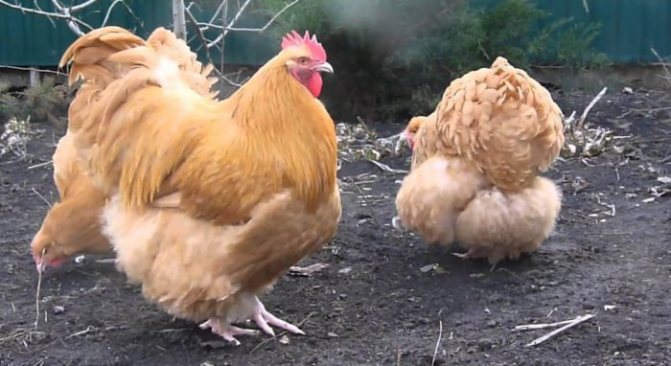

Fawn color
Orpington blue is especially beautiful. The main shade of the feather in birds with this color is ash or gray, the neck is darker, the down is light smoky. Each feather is outlined at the end with a slate-colored edging.
Orpington gold is no less interesting. The main background of such birds is brown, the head is red, and a fiery red collar flaunts on the neck. The feathers on the belly are predominantly black with minor patches of rufous. The end of each feather has a thin black edging.
Temperament
Representatives of the Orpington breed are peaceful, livable birds. They do not shy away from people, they quickly get used to a new place of residence and owner. Conflicts in a chicken coop are rare for them. Birds love to walk, so the aviary type of content is suitable for them. Some farmers note that chickens are shy, but this goes away as they get older.
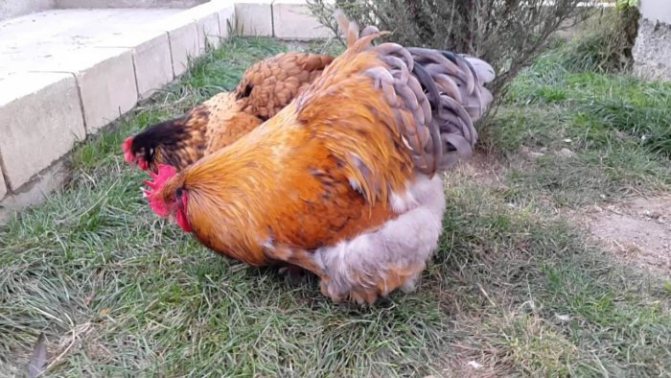

Orpingtons are active, curious birds
Productivity indicators
A one-year-old rooster weighs about 5 kg. The weight of an adult laying hen is 3.5–4 kg. The recruitment rates are average. Orpington meat is juicy and has a pleasant taste. The birds need to move more, for them the cellular content is unacceptable due to their tendency to obesity.
Egg production reaches 160 units of production in the first year of laying. Further, productivity decreases by 10-15% annually. In this regard, the chickens are renewed every 2 years. Egg weight - 50 g.
Orpington productivity
Since the Orpington is a versatile meat and egg breed, their performance indicators for both meat and eggs are good, although not outstanding, as in more highly specialized breeds.
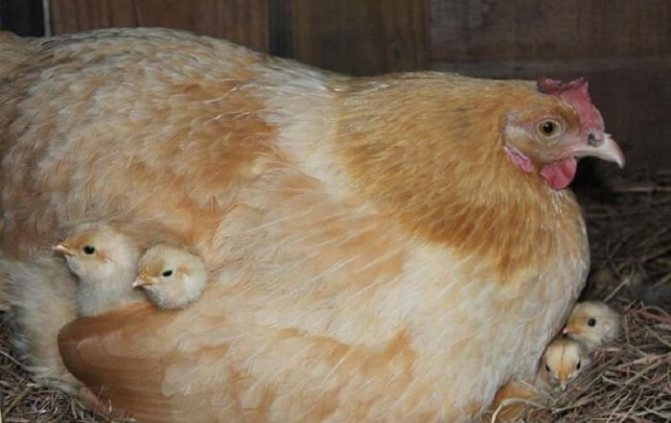

As testimonials testify, Orpingtons are not growing at a very fast pace, but they are able to gain a solid mass: adult chickens weigh on average about 3-4 kg, roosters - 4-5 kg. Obviously, with such indicators of maximum weight, high early maturity is simply impossible.
The egg production of birds is also quite solid, although not outstanding. In the first year, the laying hen produces an average of 160 to 180 eggs. In the second year, egg production decreases to 130-140 eggs. The eggs themselves are medium in size (55-60 g), with a firm light brown or creamy shell.
Advantages and disadvantages
Farmers appreciate Orpington chickens for their qualities:
- high meat productivity;
- presentation of carcasses;
- excellent taste of meat;
- good-natured character;
- the ability to quickly adapt to new conditions;
- developed maternal instinct in laying hens;
- good egg production rates.
English chickens are not without flaws, but there are far fewer of them than advantages. For example, slow maturation and tendency to obesity. Another disadvantage is that birds eat a lot. Experienced farmers recommend sending them out on a daily basis. By eating grass and worms in the yard, birds help their owners to reduce the cost of feed by 25-30%.
Character
Everyone knows that each breed taken separately differs from others in its disposition and habits. Some like to show character and aggression, others have indefatigable activity and, due to excessive curiosity, sometimes suffer themselves.
But, the Orpington breed of chickens is one of the most safe for home keeping.Due to their calm and peaceful nature, in the territory of the poultry house and walking yard, they behave like real English aristocrats.
The sedate, slow, and clumsy clucks require very little attention, and can be content with what they have.
Due to their heavy weight and underdeveloped wings, they are not able to take off, so they are content with only measured walks and quiet clucking.


Features of the content
Representatives of the Orpington breed are undemanding to the conditions of detention. They only need a comfortable home, walking and good food.
Chicken coop
The poultry house should be located on a hill so that it is not heated by water after heavy rains or melting snow. The bird is quite large, therefore 1 individual is populated per 1 m2. In a cramped room, birds experience stress, which often leads to pecking.
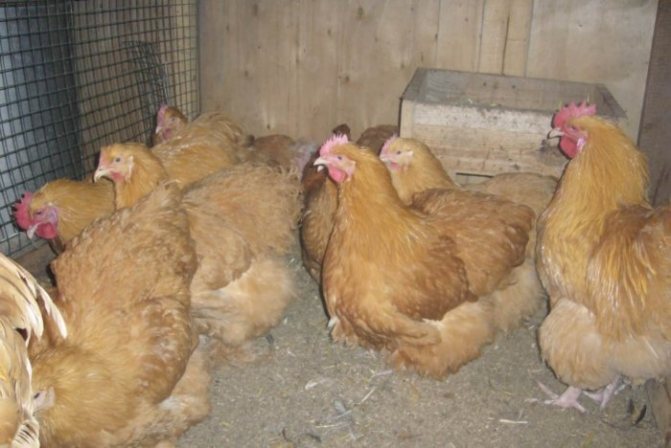

Chickens are stressed in cramped conditions
Shed requirements:
- Good ventilation. In its absence, ammonia and hydrogen sulfide accumulate inside the chicken coop, which are released from the feces of birds. Staying in a stuffy room leads to a decrease in egg production and the rate of fertilization of eggs, a weakening of the immunity of birds.
- Electrical connection. In winter, when the day is shortened, it will have to be artificially extended to 13 hours. Otherwise, the chickens will stop laying.
- Roosts should be no more than 50 cm high - orpingtons cannot fly. For each individual, 30–35 cm of the length of the pole is taken.
- Nests are installed in secluded corners of the barn, protected from drafts and light. You can use wooden crates lined with a thick layer of soft straw.
- Ash-sand baths. They serve to prevent the spread of skin parasites - feather eaters, fleas, bedbugs, ticks. They are installed on the floor of a chicken coop or in a walking yard.
- Drinking bowls and feeders. The farmer must provide the birds with sufficient inventory. Each individual is given 25 cm of feed tape.
- Soft, dry bedding. A thick layer of wood chips with the addition of peat is laid on the floor. Such material absorbs droppings well. Once a month, the top layer of the material is removed and a fresh one is added. The old bedding is replaced with a new one twice a year.
Attention! In autumn and spring, general cleaning is done in the hen house - the surfaces are treated with disinfectants, the walls are lime. To destroy bedbugs and other parasites, the room is fumigated with a sulfur stick.
The optimum temperature in the chicken coop is + 14… + 23 ºС. If the thermometer drops below in winter, you will have to take care of heating. Farmers use oil radiators, infrared lamps, stoves to keep warm.
Walking yard
Representatives of the English breed are prone to obesity, so you will have to arrange a walk for them. Since birds cannot fly, there is no need to install a high fence. The site should be located on the south side of the chicken coop and be connected to it with a manhole.


Orpington chickens are good for walking
Part of the territory will be equipped with a canopy to protect it from rain and hot sun. The paddock should be sown with grass. Chickens love nettle, alfalfa, dandelion leaves, plantain. By scattering grain feed on the ground, breeders encourage the birds to move actively. This benefits their health and has a positive effect on the taste of the meat.
Attention! In winter, chickens are also released into the fresh air, but walks should not be long. If there is a severe frost, the thermometer reads –8 or less, it is better for birds to stay in the chicken coop. Walking is not limited in summer.
Feeding features
Those who decide to breed Orpington chickens need to be prepared for the fact that these birds are very voracious. They will eat as much as they put in the trough. However, overeating leads to the accumulation of fat in the carcasses. In addition, obesity affects egg production - it decreases. Experienced farmers advise feeding English chickens in moderation, without exceeding the recommended dosages.


Sprouted grains are a source of vitamins
In the warm season, a third of the diet is pasture. In winter, the birds move little and quickly gain weight, as they feed mainly on grain mixtures. At this time, it is worth introducing more vegetables and dried herbs into their diet. Sprouted grain will serve as a source of vitamins. Birds love warm, moist mash, which is cooked in broth or whey. They add potatoes, carrots, beets, a little cabbage.
Attention! It is very important to include mineral supplements in the laying hens menu - shell, chalk, salt, bone and fish meal.
Chickens should be fed 2 times a day in summer and 3 times a day in winter. It is advisable to distribute food at the same time, avoiding long breaks. The feeder is filled with such a volume of food that the birds can eat in 30 minutes. Leftover feed must be removed. It is important to change the water in the drinker daily so that pathogenic bacteria do not multiply in the water. On hot days this is done more often.
Disease prevention
Orpington chickens do not give farmers the trouble of frequent diseases. The main thing is to provide them with good conditions of detention. It is necessary to maintain cleanliness in the poultry house, to fight rodents and ectoparasites that spread infectious diseases. If possible, it is worth limiting the contact of poultry with wild ones - crows, jackdaws, pigeons. To do this, many sew up the upper part of the aviary with a net. Vaccination will help to avoid such dangerous diseases as pasteurellosis, mixoplasmosis, Newcastle.
Attention! Daily monitoring of the state of the birds will allow you to detect alarming symptoms in time and isolate the sick individual.
Diseases that occur in Orpington chickens more often than others:
- goiter atony;
- inflammation of the oviduct - occurs in pullets;
- injuries sustained when falling from a perch.
Feeding


Adults often suffer from obesity, from which the quality of their meat suffers greatly. Therefore, you should pay special attention to what and when chickens eat. Their diet should be balanced and varied, include animal products, grass, grain, milk and sour milk mixtures. The basis of the diet is grain with the addition of boiled vegetables such as beets, carrots, potatoes and others, as well as herbs, in particular nettles. Dry mixes are alternated with wet mash of whey and bread or waste from the table. You can use meat broths, mixing various "soups" on their basis.
You need to feed the Orpingtons on a limited basis, giving out food twice a day. The portion should be of such volume that in half an hour after serving, the chickens eat everything without a trace. In summer, 40% of the food is fresh grass, which contains all the vitamins necessary for a healthy life for birds. To replenish the supply of calcium necessary for the formation of a strong shell, chickens are provided with limestone, chalk, shell rock, eggshell ground into dust. And so that there are no problems with grinding food, individuals are supplied with fine gravel or coarse river sand.
It has been noticed that it is in winter that chickens tend to gain extra grams. From this, the fertilization of eggs suffers, and egg production also decreases. Therefore, in winter, the amount of feed is left the same as in summer. And high-calorie grain mixtures are replaced with sprouted grains.
Attention!
To avoid obesity of chickens and thus a decrease in productivity, the herd should be fed on a schedule, limiting food, regularly arranging hunger days.
Breeding poultry in the household
Layers of the English breed line mature by 6-7 months. For breeding for a tribe, the best individuals are selected that meet the standards of the standard and show good growth rates and egg production. One rooster is left for 10 females.
The low percentage of fertilized eggs is a problem faced by farmers.Orpingtons have a heavily feathered tail, it is difficult for the male to make contact with the female. It is recommended to trim the feathers around the genitals of chickens and roosters.
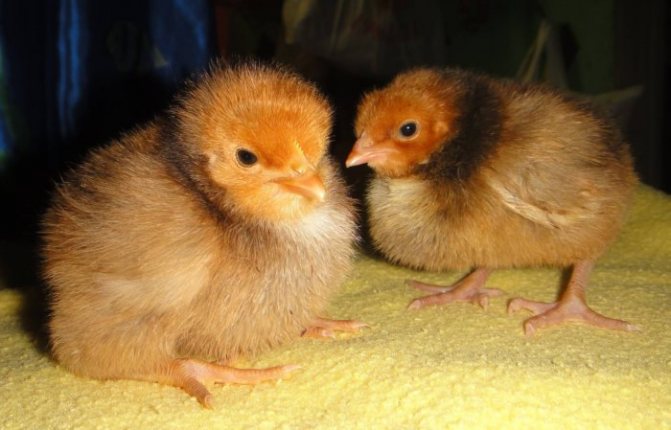

Orpington chicks
Orpington hens have a developed maternal instinct. They willingly sit on eggs and take care of the younger generation. However, due to the large weight, hens often break the shell. For this reason, many farmers choose to hatch their chicks in an incubator.
To obtain healthy chicks, large, undamaged eggs of the correct shape are selected. Before laying, they can be stored for up to 2 weeks at temperatures from +5 to +15 ºС. When the required amount is reached, the hatching egg is examined with an ovoscope. Then the material is placed in an incubator. Chicks hatch after 21-22 days.
Reference. The hatchability rate for Orpington chicks is close to 80%. Young growth has good vitality. In the first week of life, only 1 chick out of 20 dies.
Chick care
Immediately after birth, the chicks are placed in a brooder. The temperature in the first few days is maintained at +30 ºС. The bedding material is changed daily, as the young are sensitive to moisture.


Chickens are kept in a brooder
From 1 to 3 days, chickens are fed exclusively with boiled eggs. Further, new products are carefully introduced into the diet - steamed millet, green onions, low-fat cottage cheese, grated carrots. The amount of feed is increased gradually. Whole grains can only be fed to birds from the age of one month.
Attention! 1-2 crystals of potassium permanganate are added to the drinking water for the young. This helps prevent the development of intestinal infections.
Orpington chicks need daily walks. They begin to be released into the street 2 weeks after birth. When the chicks are fully fledged, they are transferred to the chicken coop, but for the time being they are kept separately from the adult birds.
Varieties
Initially, the Orpingtons were displayed in black. Then, when they began to constantly mix them with other chickens, various variations of this bird began to appear and today there are such:
- White. These are completely white chickens. Good breeding birds (which are used for breeding) must have perfect white plumage, without any spots, blotches, etc. The eyes of the white Orpingtons are orange-red.
- Blue. Painted in an interesting bluish shade. This Orpington variety is considered pure if its feathers have no other colors other than bluish blue. In addition, there should be a “closing” black border on the edge of each feather.
- Golden. This is a rather unusual species that stands out for its decorative effect.
- Calico... A rather specific variety, which also has the name porcelain or tricolor. The dominant color of Orpington chintz is red-brown. The edge of all feathers is decorated with a small black speck, at the end of which there is a beautifully located white circle, which farmers call a "pearl".
- Striped. This Orpington has another name - hawk. Chickens really very much resemble hawks in their color. The main color of the plumage is black with a greenish tint. The feathers have wide white stripes. The nib ends in black.
- Marble. This is a very beautiful variety, which has a black and white plumage, very much like marble. The dominant shade of the chicken is black. All feathers have a white spot.
- Palevye. This Orpington also received the name "Yellow". The color of the plumage is reminiscent of the color of gold. Down and rods are also yellow.
- Red. Chickens of this subspecies are colored in red-chestnut color, which is evenly distributed throughout the body of the hen. The feathers and feathers are also red. The eyes are orange-red.
- Partridge They have a specific color of feathers. This species of Orpington is considered to be very rare. The color of females and males is somewhat different.The loin and collar area of the cockerels is of a golden hue. The area of the abdomen, chest and lower leg is black with brown edging at the ends of the feathers. The back and shoulders are brown with a golden tint. At the same time, the chickens have a golden brown color.
Reviews of poultry farmers about the breed
Farmers with experience in breeding Orpingtons refer to them as beautiful, unpretentious birds. True, some complain that it is impossible to determine the sex of chickens until they grow up. According to poultry farmers, the main thing is not to overfeed the birds, then their meat has high quality indicators. The carcasses of young cockerels and hens are willingly bought by restaurant owners.
The description of the Orpington chicken breed is of interest to those who want to start breeding them. This desire is justified - the birds will not only become a decoration of the yard, but also bring good income to their owner from the sale of egg and meat products. It is one of the most popular breed lines among poultry farmers in Europe. It is not surprising, because its representatives are undemanding to care, are peaceful and show high productivity in the meat and egg direction.
Analogs
The Kochinhins can be called the analogue of the Orpingtons. They are massive birds that gain weight quickly. They are well suited for breeding for meat, and because of their lush, bright plumage, they can be a good decoration for a summer residence.
Moreover, Cochinchins are well suited for a novice farmer or just a lover of poultry, as they are unpretentious and can survive in any conditions. However, the breeder needs to monitor the diet of the chickens, otherwise they can get very fat.
Another analogue is the Brama chickens. They take root well in any conditions of detention, have a good maternal instinct, and are also characterized by a pleasant appearance.
Unfortunately, this breed of chickens lays a small number of eggs, so it is difficult to reproduce in an amateur environment. Eggs are usually aged in incubators.


